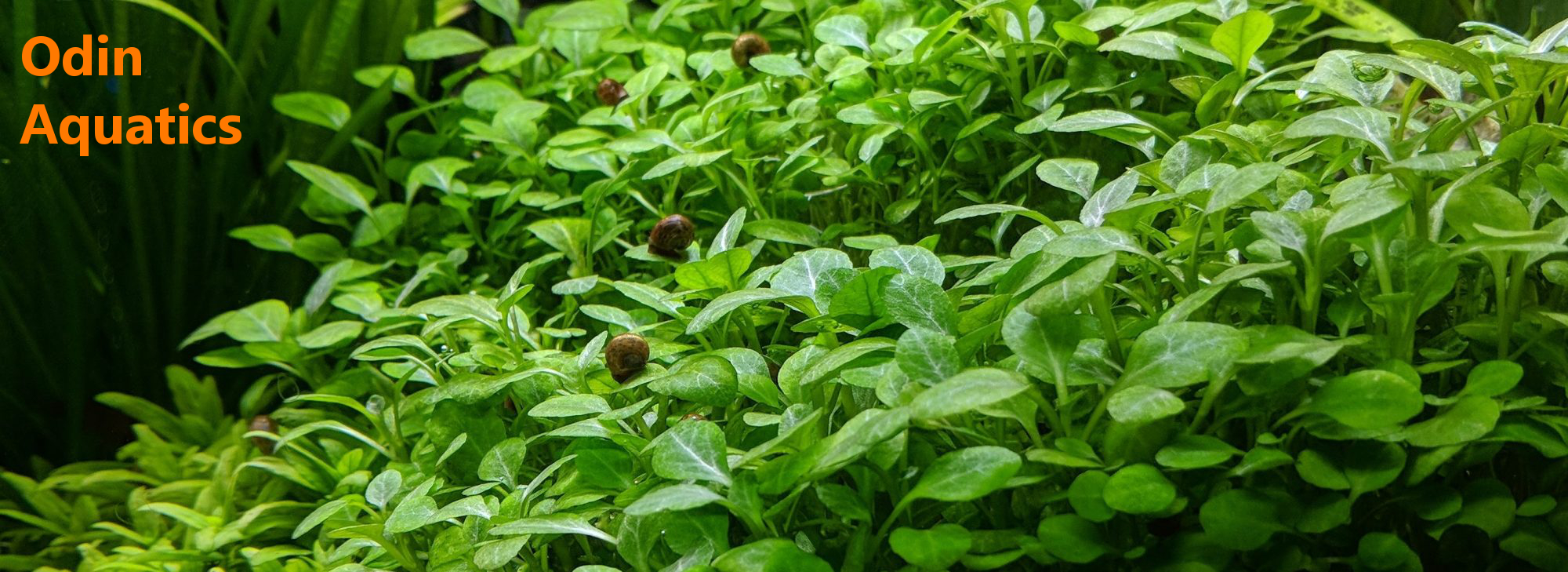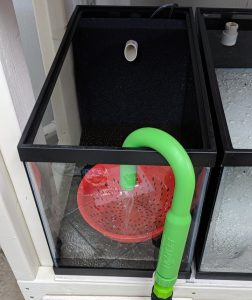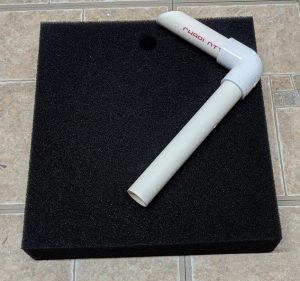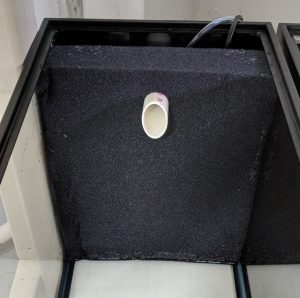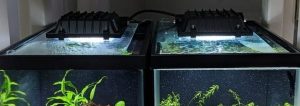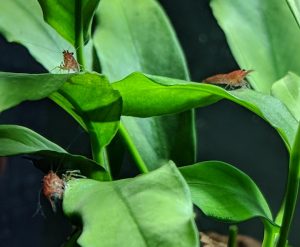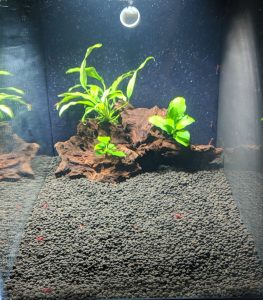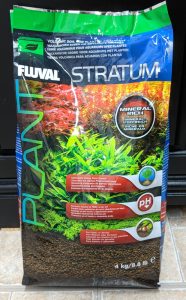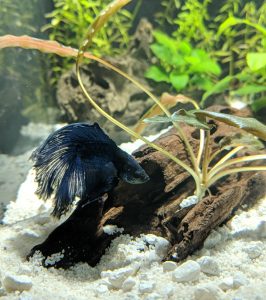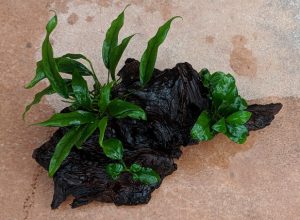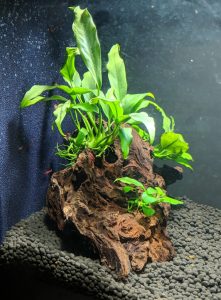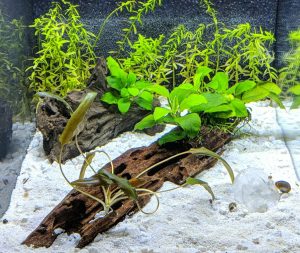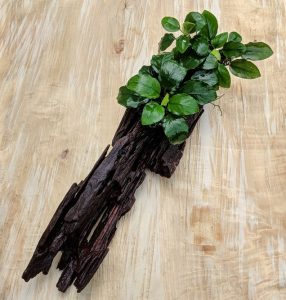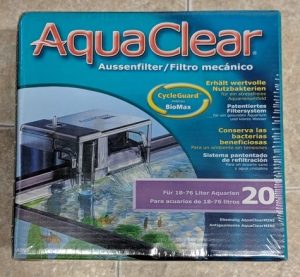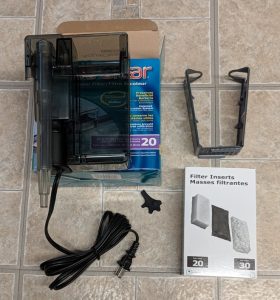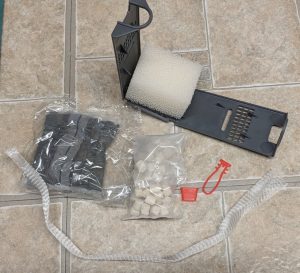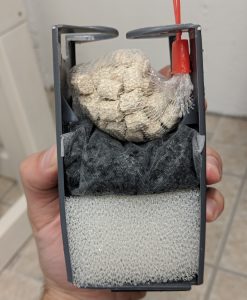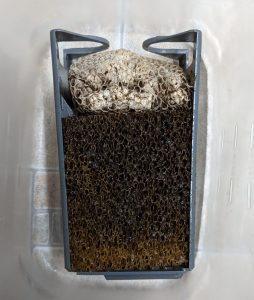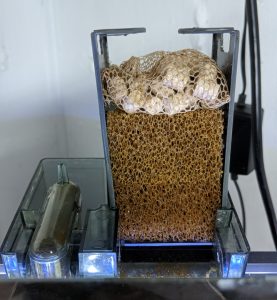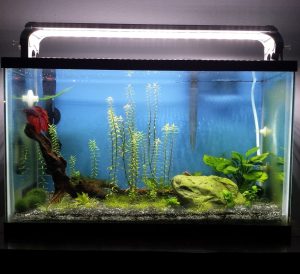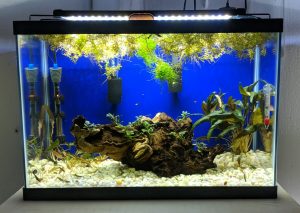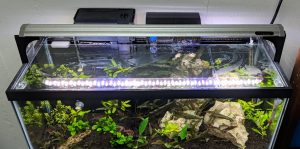
I have DIY glass aquariums lids on three of my planted tanks. They're cheaper to make than almost any lid you can buy commercially and, unlike lids with hinges, they allow a ton of light into the tank.
Each one of these lids cost less than $20 and required no tools to make
Pros & Cons to a DIY Glass Aquarium Lid
Above you can see a glass lid on my 20 gallon long planted tank. There are a lot of benefits to a solid glass lid like this:
- It wont become cloudy or discolored over time like plastic lids
- It wont bend or sag like plastic lids
- It keeps moisture in the aquarium, and blocks almost no light
- It is made custom for your application, so you can choose its dimensions
There are only a couple of reasons NOT to use a solid glass lid:
- This design only works on aquariums with a rim on the top
- They are breakable, and can cause injury to you or your fish if broken (I have broken one)
In my opinion the benefits definitely outweigh the risks. I have used these lids for years on different aquariums and only ever broken one. No glass actually got into my aquarium, I was moving the lid and not paying enough attention. If you're always careful when handling them, there's not much to worry about.
How to Make a DIY Glass Aquarium Lid
Making one of these lids is very simple. All you need to do is:
1. Measure your aquarium
You want the lid to rest on the ledge inside the plastic rim of the tank, so you'll measure from one inside edge to the other. Then, you have to decide how far across the aquarium you want the lid to extend.
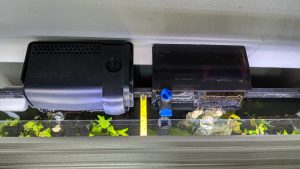
In the photo above you can see my HOB filters extend about 2 inches into the aquarium. I had my lid cut to leave a little more than 2 inches of open space in the back, so that the filters don't contact or spray water onto the glass. This space on the back side is also handy for dropping food into the tank without moving the lid.
2. Have a piece of glass cut to your dimensions
I have always gone to a local hardware store to have pieces of glass cut, but you can also go to a specialty glass shop. I use Ace Hardware in the Denver area, but I have also heard that some Lowes locations will cut glass. You should be able to find a place that will cut glass in your area.
Since this is just a single pane of glass, it should be less than $20, even for a long cut like my 29" lid below. I paid about $10 for that piece of glass that is roughly 29" x 9".

3. Attach hooks for lifting and moving the lid
I use clear command mini hooks as handles for these lids. A pack of these hooks is enough for 4-5 DIY aquarium lids, and only adds a couple dollars to the cost of each one.
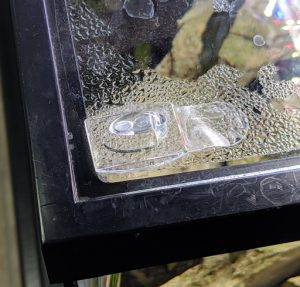
I like these because they blend in with the glass lid, and they stick on extremely well. Once they are attached, you can lift the lid off just using the two hooks as handles.
That's it. These lids are easy to clean using a damp paper towel, and the only maintenance they require is being wiped down once every month or so. As long as you're careful not to drop them, they will last as long as your aquarium.
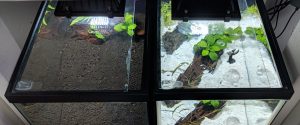
If you are interested in other types of DIY aquarium lids, see my post on making lids out of Polycarbonate here.

